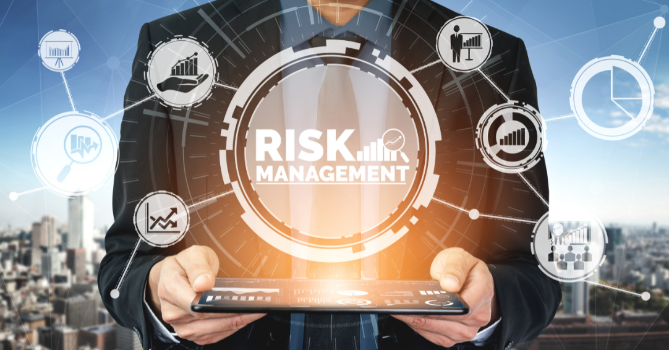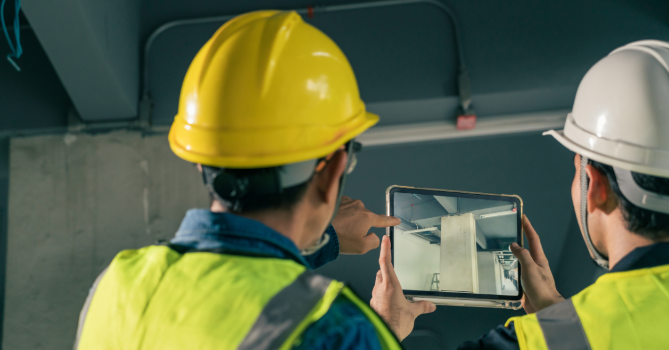
Digitalizing Seismic Damage in Masonry with BIM & AI
Introduction
Earthquakes can cause severe damage to masonry buildings, especially in areas with older structures. These buildings, often made of brick or stone, are particularly vulnerable during seismic events. Traditionally, assessing the damage after an earthquake has been a manual process, often slow and prone to errors. This approach makes it difficult to quickly and accurately evaluate the extent of damage, which can delay necessary repairs and put lives at risk.

Building Information Modeling (BIM) and Artificial Intelligence (AI) are changing this. BIM allows for the creation of detailed 3D models of buildings, making it easier to visualize and assess potential damage. When combined with AI, these models can analyze vast amounts of data quickly, identifying patterns and predicting how a building might behave during an earthquake. This not only speeds up the assessment process but also improves its accuracy.
Using BIM and AI together represents a significant advancement in how we manage and respond to seismic damage. These technologies can help save lives by enabling faster and more accurate assessments, allowing for quicker repairs and better preparedness for future earthquakes. As the world continues to face the threat of natural disasters, adopting these digital tools is essential for protecting our built environment.
This introduction sets the stage for discussing the benefits of using BIM and AI in seismic damage assessments, emphasizing the urgency and potential of these technologies.
The Role of BIM in Seismic Damage Assessment
Building Information Modeling (BIM) is a game-changer in how we approach seismic damage assessments. Traditionally, evaluating damage to masonry buildings after an earthquake required on-site inspections, which were often time-consuming and prone to human error. With BIM, the process becomes much more efficient. BIM allows us to create detailed 3D models of buildings, capturing every aspect of the structure from the foundation to the roof. These models are not just visual; they contain data about materials, structural integrity, and how the building is expected to behave during an earthquake.

The use of BIM in seismic damage assessments is supported by numerous studies and real-world applications. For example, in Italy, BIM has been used to assess the vulnerability of historical masonry buildings, providing critical data that informs restoration and preservation efforts. This approach ensures that the assessments are not only faster but also more accurate, helping to prioritize repairs and retrofitting efforts in buildings that need it most.
By integrating BIM into seismic damage assessments, we can move from reactive to proactive strategies. Rather than waiting for an earthquake to occur, BIM allows us to model potential seismic events and understand how a building might respond. This foresight can save lives and reduce the economic impact of earthquakes by ensuring that buildings are better prepared to withstand seismic forces. Moreover, it enhances collaboration among engineers, architects, and disaster management teams, ensuring that everyone is working from the same detailed and accurate information.
This section highlights the transformative impact of BIM on seismic damage assessment, showing how it improves both the speed and accuracy of evaluations while also enabling more proactive disaster planning.
Integrating AI for Enhanced Accuracy
Artificial Intelligence (AI) brings a new level of precision to seismic damage assessment. While BIM provides detailed models of buildings, AI enhances these models by analyzing data and predicting outcomes with remarkable accuracy. AI can process large volumes of data collected during and after earthquakes, identifying patterns that might be missed by human analysts. This is particularly valuable in assessing masonry buildings, where subtle cracks or shifts in structure can indicate significant underlying damage.

AI’s role in seismic assessments is gaining recognition in the construction industry. For example, machine learning algorithms can be trained to recognize patterns in damage from previous earthquakes and apply that knowledge to predict damage in similar structures. Studies have shown that AI-driven analysis can improve the speed and accuracy of damage assessments by up to 50%, reducing the time needed to make crucial decisions about building safety. In places like Japan and Italy, AI has been integrated into national disaster response strategies, proving its effectiveness in real-world scenarios.
The combination of AI and BIM doesn’t just improve how we assess damage; it transforms the entire process. AI can help predict the effects of future earthquakes on specific buildings, allowing for better preparedness and risk management. This proactive approach means that repairs and reinforcements can be planned before an earthquake occurs, potentially saving lives and reducing costs. The integration of AI into BIM models is a powerful tool for making our built environment safer and more resilient to natural disasters.
This section emphasizes how AI enhances the accuracy and efficiency of seismic damage assessments, making it a crucial component in modern disaster management strategies.
Case Studies and Applications
Real-world applications of BIM and AI in seismic damage assessments demonstrate their effectiveness. In Central Italy, BIM was used to evaluate damage to historical masonry buildings after a series of earthquakes. The detailed 3D models created with BIM allowed engineers to visualize the damage comprehensively, identifying structural weaknesses that might have been missed in traditional assessments. This data-driven approach informed the restoration and retrofitting strategies, ensuring that the buildings were reinforced in the most effective ways.

Another significant case is the use of AI in Japan, where machine learning algorithms were employed to predict seismic damage in urban areas. These AI models were trained on data from previous earthquakes, enabling them to forecast how different buildings might react to future seismic events. This predictive capability helped in prioritizing inspections and repairs, significantly reducing the time and cost involved in post-earthquake assessments.
The combination of BIM and AI is also making waves in Portugal, where it was applied to assess the Monserrate Palace, a historic site vulnerable to seismic activity. The integration of AI with BIM allowed for a detailed analysis of the palace’s structural integrity, guiding the conservation efforts with unprecedented accuracy. These technologies provided insights that traditional methods couldn’t, such as predicting how specific areas of the building would fare in an earthquake and suggesting targeted reinforcement strategies.
These case studies highlight the real-world impact of BIM and AI in making seismic damage assessments more accurate and effective. By leveraging these technologies, we can better protect our historical structures and prepare for future seismic events, ensuring safety and preservation for generations to come.
Future Implications and Conclusion
The integration of BIM and AI in seismic damage assessment is not just a trend; it’s the future of how we protect buildings from earthquakes. These technologies are paving the way for more precise, data-driven approaches to building safety. As the construction industry continues to evolve, the role of BIM and AI will only grow, offering new possibilities for disaster preparedness and risk management.

The implications are vast. With BIM and AI, we can move beyond simply reacting to earthquakes. We can anticipate and mitigate damage before it happens, making our built environment safer and more resilient. This proactive approach could save countless lives and reduce the economic impact of natural disasters.
As more regions adopt these technologies, we’ll likely see a shift in how seismic assessments are conducted globally. Countries like Japan and Italy are already leading the way, showcasing how BIM and AI can transform disaster management. The success of these applications suggests that BIM and AI will soon become standard tools in the fight against seismic risks, ensuring that our buildings are not just standing but also standing strong against future challenges.
This conclusion wraps up the discussion by emphasizing the transformative potential of BIM and AI in making seismic assessments more effective and future-proof.